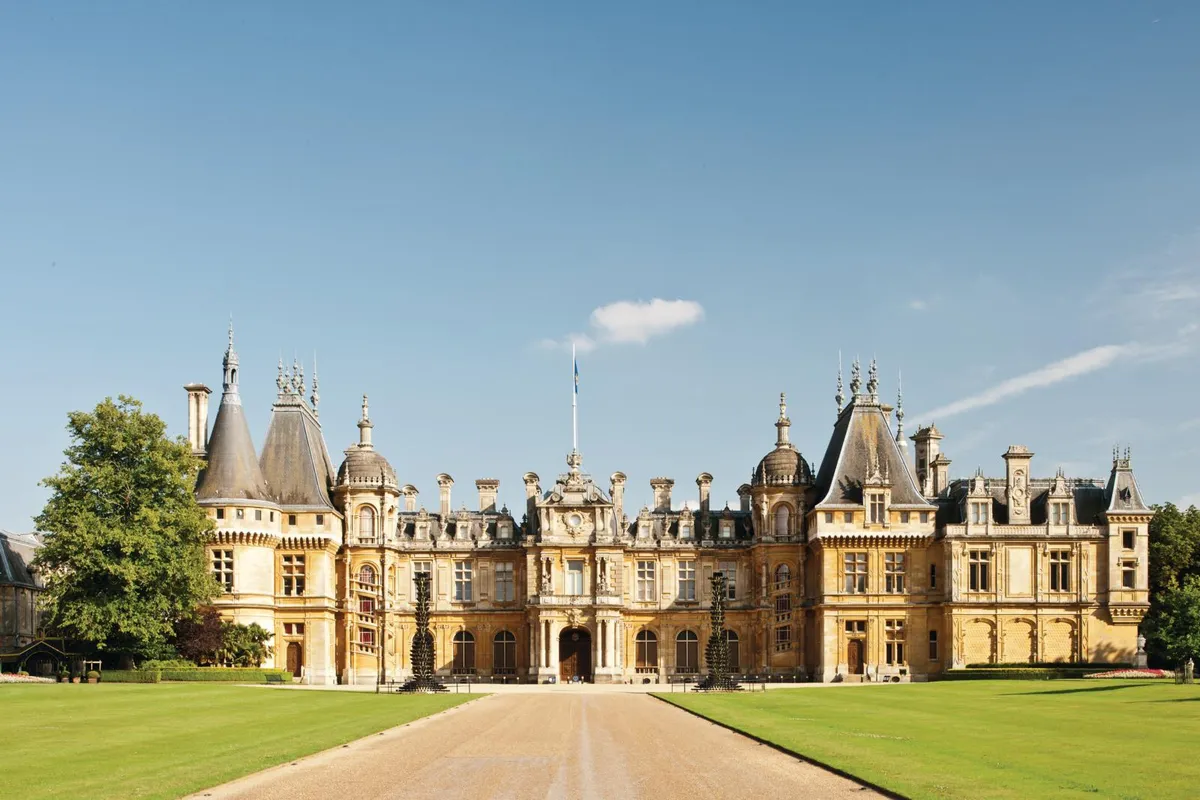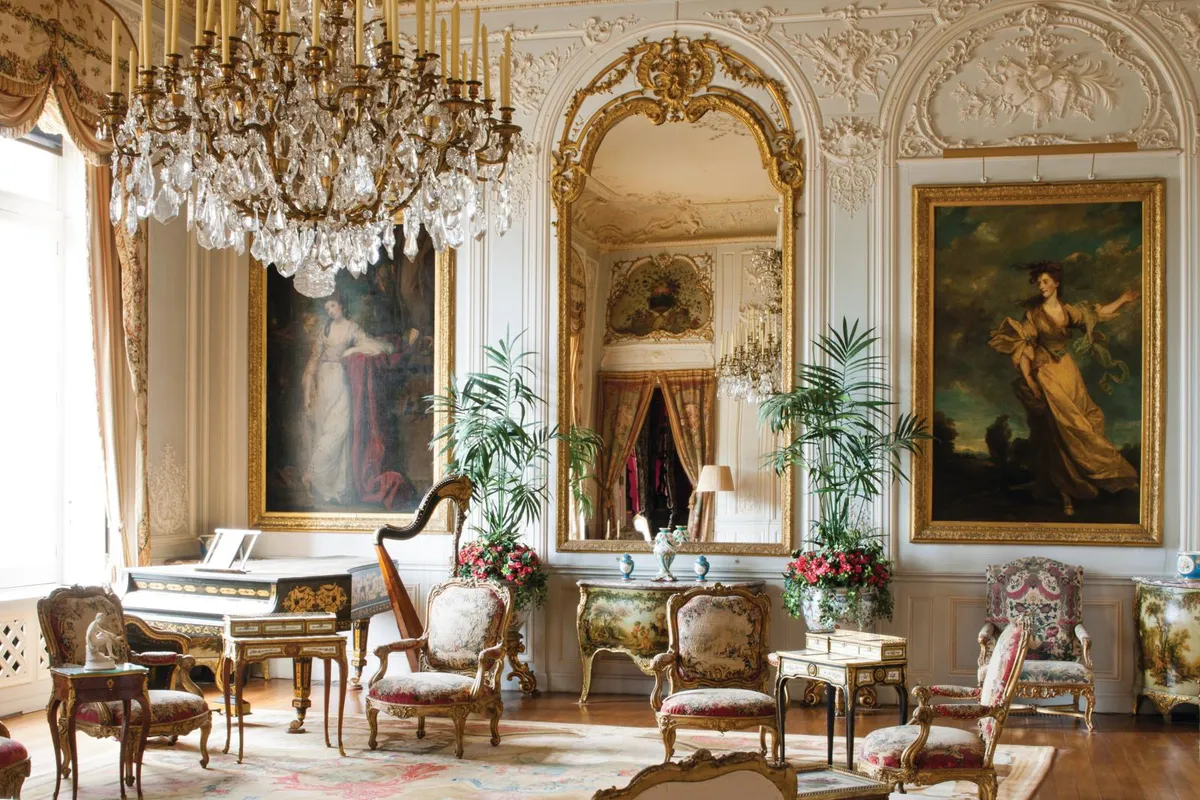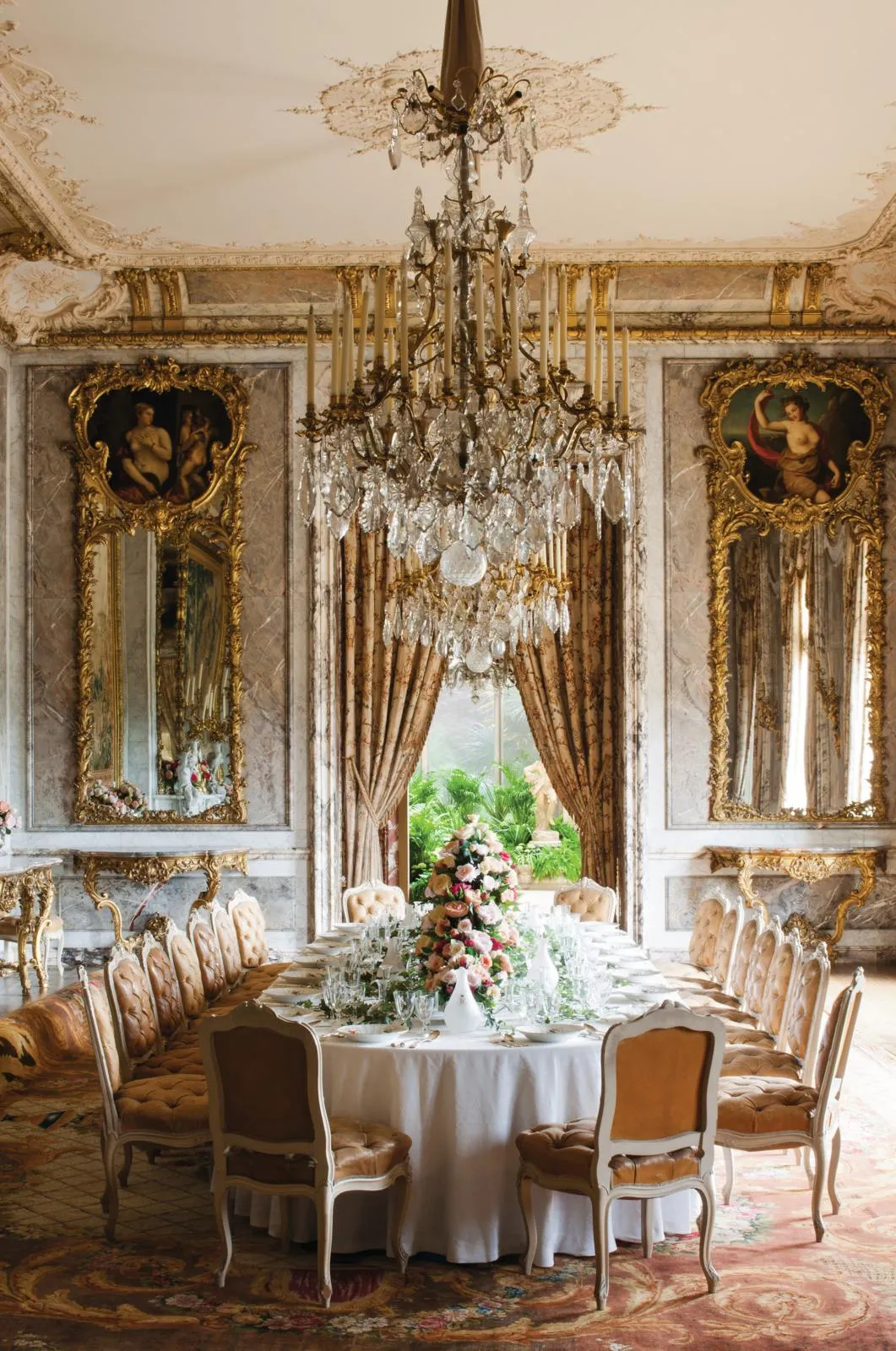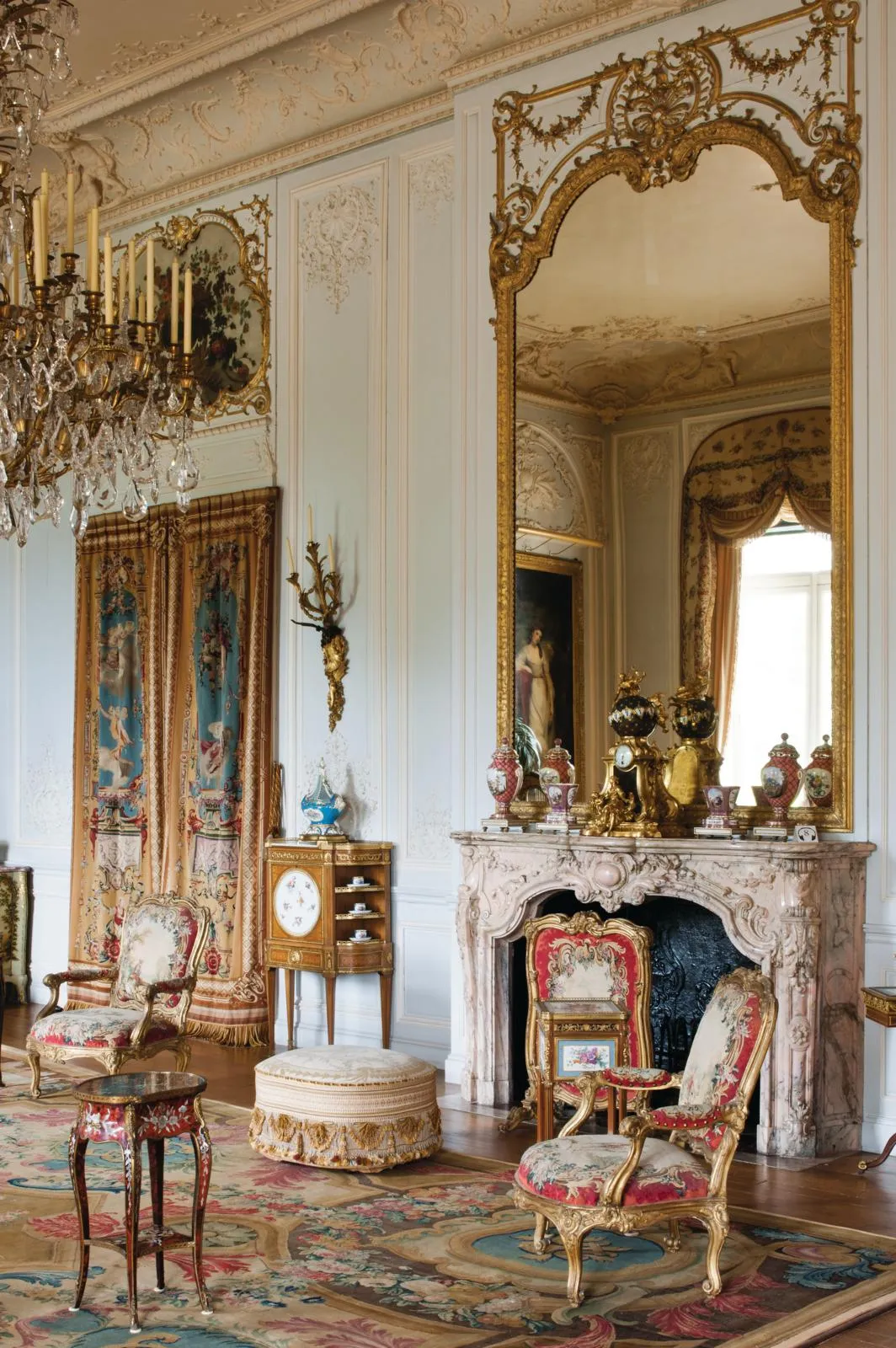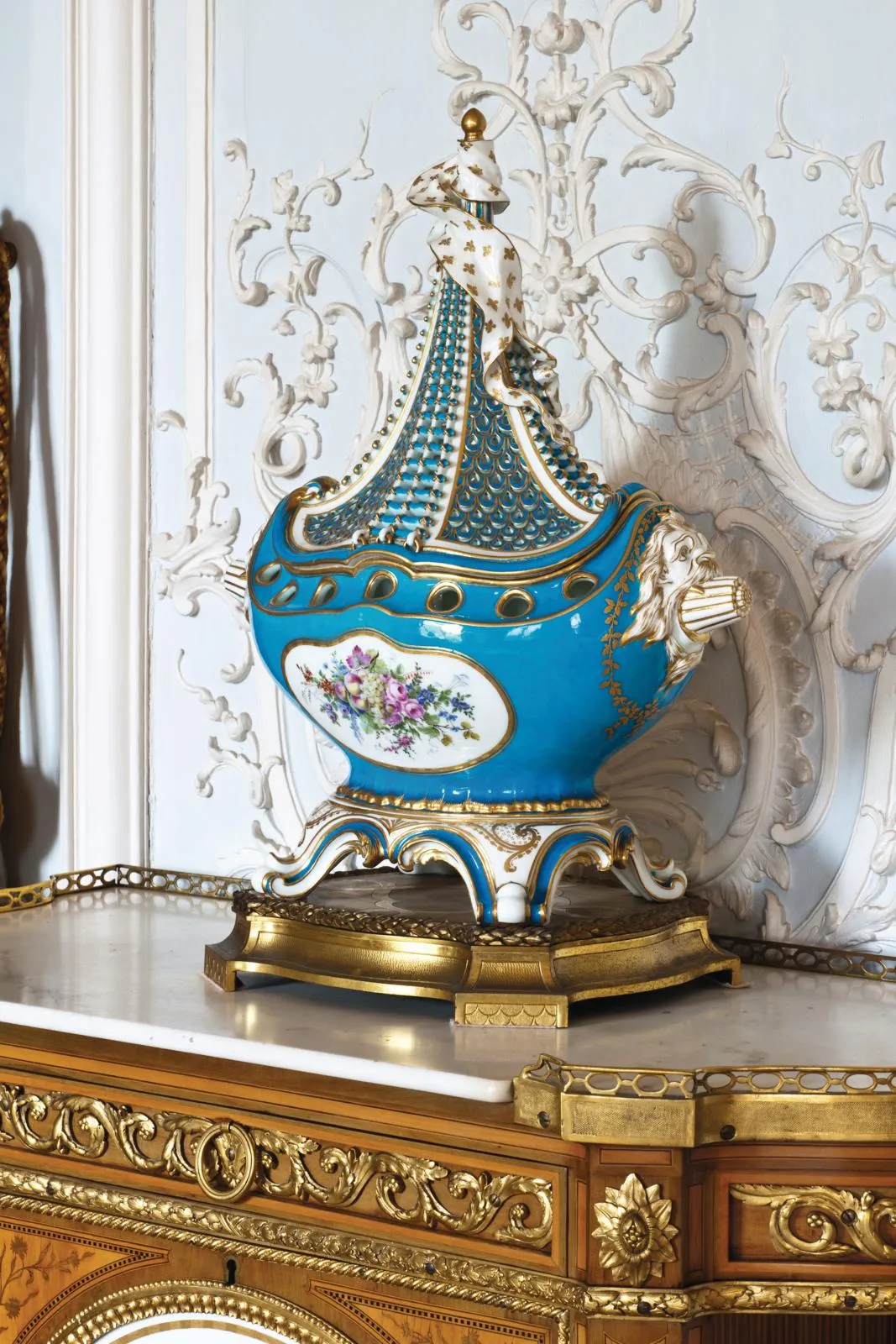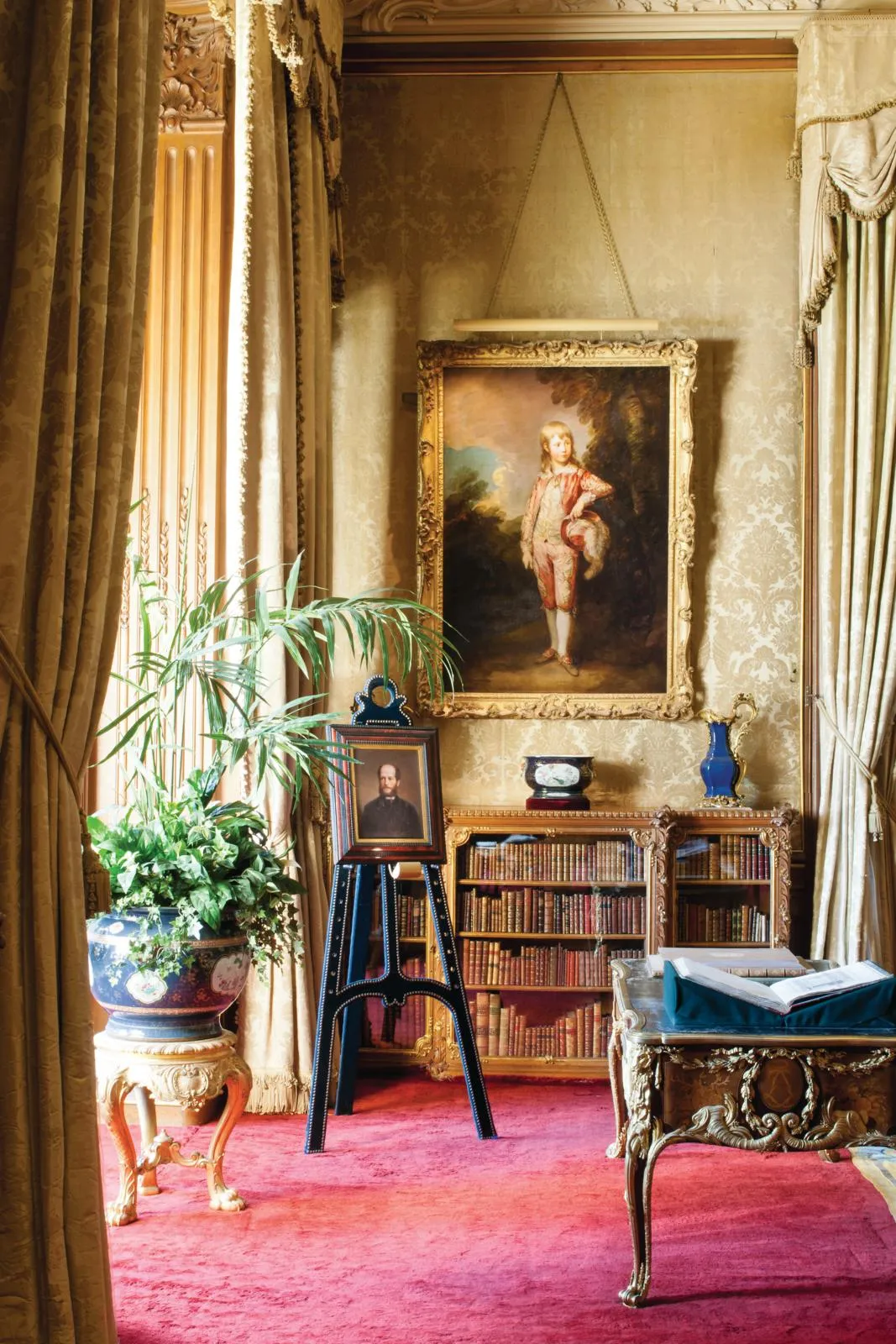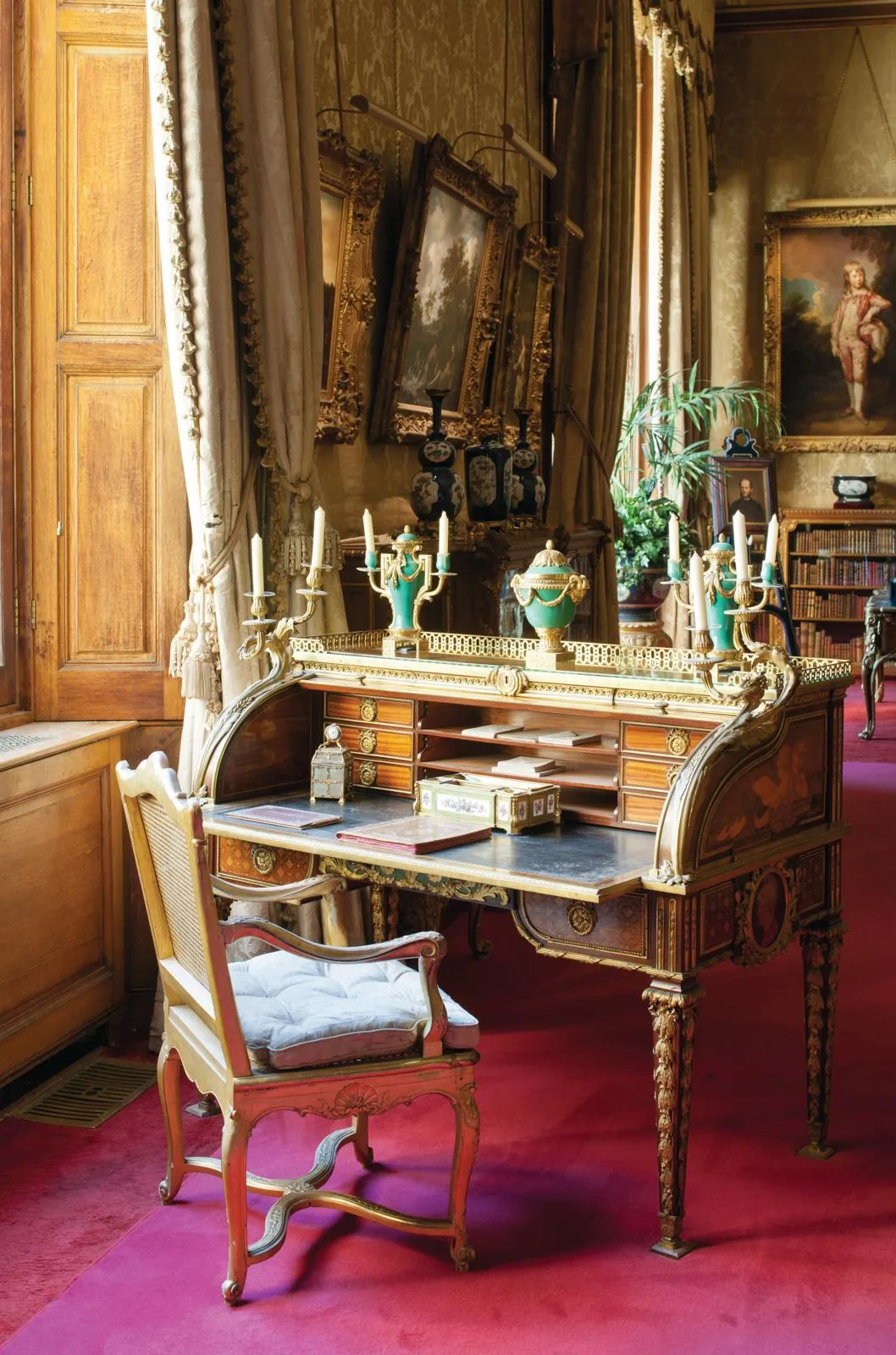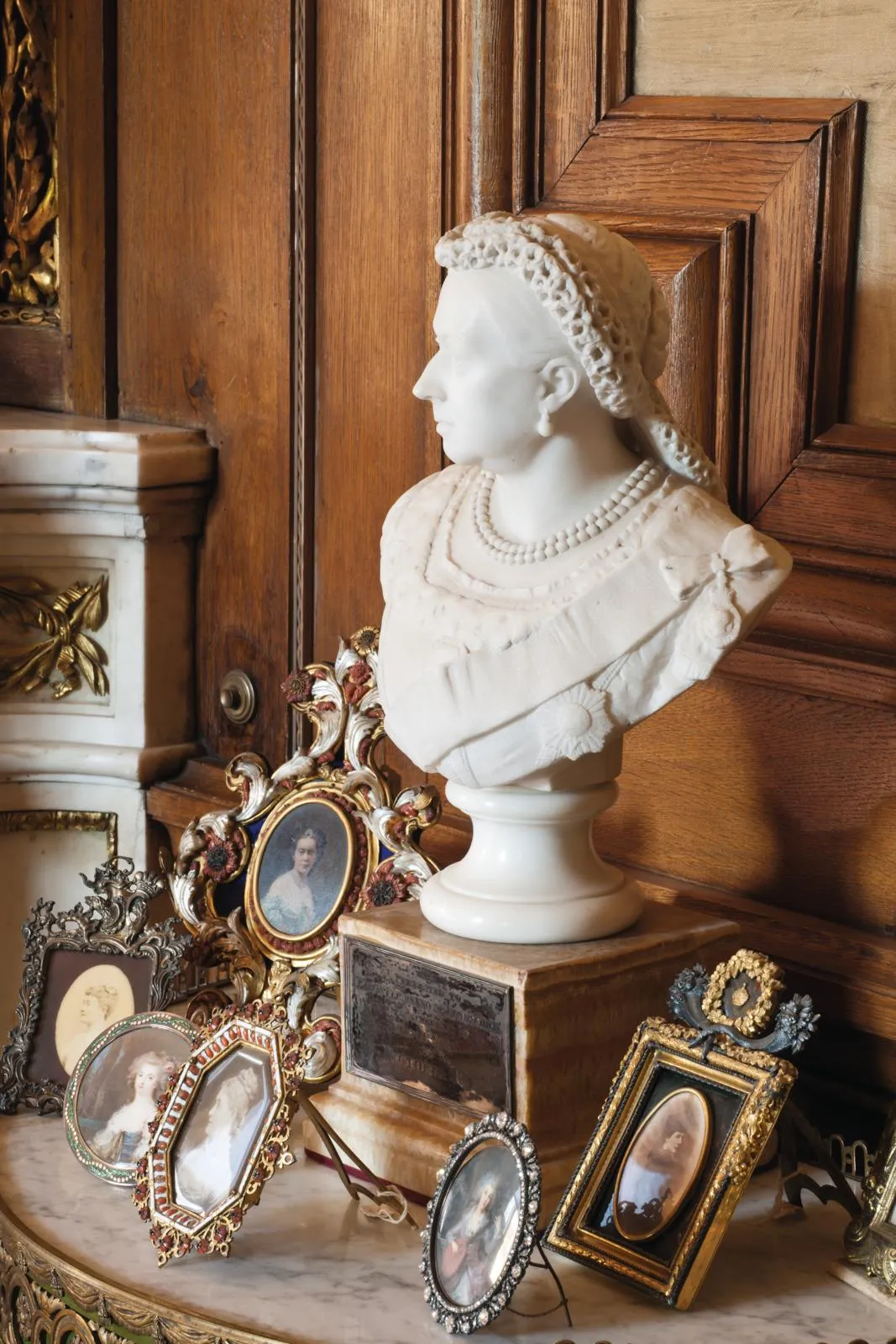It’s impossible not to be amazed by Waddesdon Manor. Leaving behind the picturesque Buckinghamshire village that shares its name, you travel along a drive that crosses parkland and spirals up a densely wooded hill. Then suddenly, there it is, in all its extravagantly pinnacled and turreted glory: a French Renaissance-style chateau, improbably perched on a Home Counties hill.
The surprise visitors feel at Waddesdon’s sudden emergence is exactly what its creator Ferdinand de Rothschild intended. ‘It’s all an amazing piece of theatre,’ explains Rachel Jacobs, curator at Waddesdon. ‘The house was never built to be lived in, just for weekend house parties during the summer months. If you were a guest here, you would experience the collection, visit the Renaissance Museum, then the novelties in the grounds, such as the Glasshouses, Aviary and the German-themed Dairy, where you might try your hand at milking cows that had Meissen name tags.’
With the help of French architect Gabriel-Hippolyte Destailleur, it took Ferdinand six years to transform the featureless estate he had bought from the Duke of Marlborough into an extravagantly landscaped French-themed fantasy. The first phase was completed in 1883. ‘Ferdinand was impatient because he thought it took so long, but Disraeli is supposed to have said that if God had a Rothschild to build the world, he wouldn’t have needed an extra day to rest,’ reveals Jacobs.
You might also like inside Burghley House
Entering the house, the first room visitors saw was the Red Drawing Room. ‘It’s a narrow house, and you feel the building’s dimensions straightaway, with the formal parterres and fountains unfolding straight ahead of you,’ explains Rachel. ‘The relationship between the richness of the interior and the exterior is very much part of every room you enter.’
Furniture made for royal French palaces by Riesener, Sèvres porcelain and Savonnerie carpets made for the Louvre are among what Ferdinand liked to call his ‘gimcracks’ and fill the Red Drawing Room with an overwhelming opulence, and something more besides. ‘The choice of French style is partly a statement of otherness,’ says Jacobs. ‘Ferdinand was a foreigner and he was Jewish. But here, he is using the very symbols of power of the French court.’
Against this elegant French backdrop, full-length portraits by Gainsborough and Reynolds serenely gazed down at the assembled guests. ‘It was commented at the time that this was a great place to compare the two rival portraitists of the 18th century. Ferdinand loved paintings of beautiful women and interesting characters,’ says Jacobs. On either side of the door hang portraits of the Prince of Wales (later George IV) by Gainsborough and his close friend John Hayes St Leger by Reynolds. ‘Hanging them together is a public statement about the importance of friendship.’
Ferdinand’s love of art was honed from an early age. One of the rarest pieces of Sèvres porcelain at Waddesdon is a ship’s vase in the Grey Drawing Room. ‘He bought it when he was only 21 years old. He hadn’t come into his inheritance yet and he had to pay for it in instalments,’ says Jacobs. He went on to buy two others. They are three of only 10 in the world.
You might also like take a tour of Highclere Castle
A vivid sense of what it must have been like to attend a sumptuous Waddesdon banquet comes when you enter the Dining Room next door. The table is set with a Meissen dinner service and rose-filled vases extend along the length of the table. The setting is based on a photograph of the room taken in Ferdinand’s day. ‘These flowers are silk, but originally they were fresh. Just imagine what the room must have smelled like,’ says Jacobs.
In the anteroom Conservatory, next door, musicians played and marble wine fountains flanked the door. Those seated one side of the table could look out on to the gardens. Those on the other side had beautiful, flower-filled Beauvais tapestries to admire. At night, the light from two huge chandeliers and a pair of putti-held candelabrum, which perch either side of the chimney piece, was reflected in five gilt-framed mirrors that came from the Paris house of the Duc de Villars.
With such luxury on offer no wonder a roll call of illustrious guests came to visit. Queen Victoria invited herself to lunch in 1890 and was impressed by the newly installed electric lighting, and the menu. She sent her chef to learn the recipes she had enjoyed, and presented Ferdinand with the bust of herself that stands on a table in the Baron’s Room, his inner sanctum.
You might also like best stately home gardens to visit in the UK
Only favoured guests were ever invited to this part of the house. For all his largesse, at heart Ferdinand was a reserved man of finicky taste, preferring to eat plain food while the guests feasted, and sometimes retreating to his domain to escape the social demands made on him by his visitors. The writer Henry James said that he liked Ferdinand and could have been more friendly if ‘they had met in conditions less inhuman,’ referring to Waddesdon.
Other guests also had their quibbles. The Shah of Persia was insulted that the Prince of Wales was unable to visit at the same time as him, and stayed in his room sulking. ‘The only thing that cheered him up was seeing Ferdinand’s poodle, Poupon, performing tricks along the East Gallery, and watching the musical Elephant Automaton repeatedly play,’ says Jacobs. With its twitching gold trunk and twirling jewelled flowers, the Elephant Automaton remains a favourite with visitors today. ‘We still make it work once a month, and it features on YouTube and even has its own Twitter account,’ says Jacobs.
Ferdinand would doubtless be delighted to know one of his ‘gimcracks’ had such lasting appeal.
